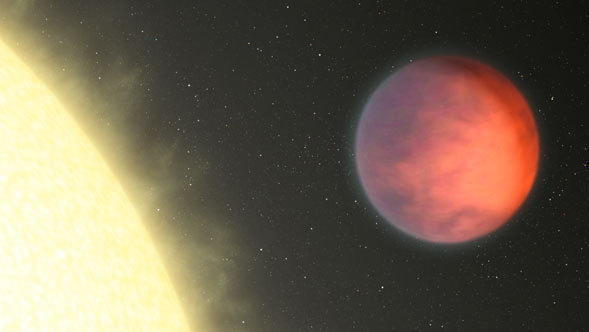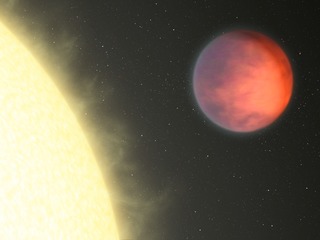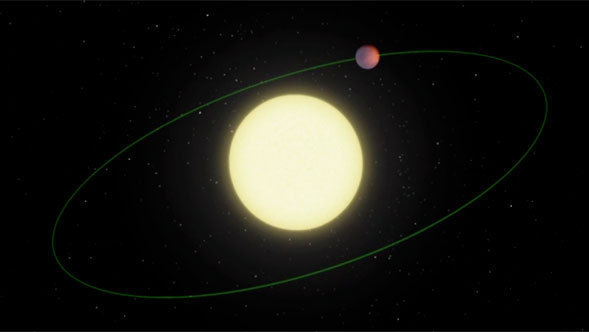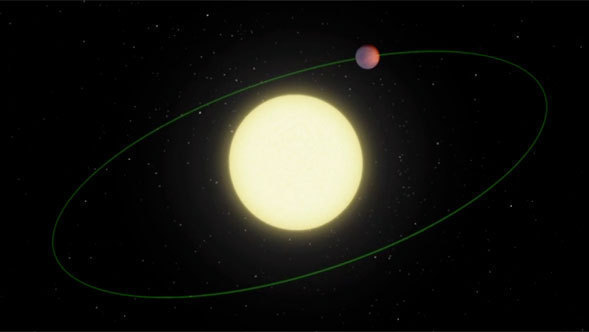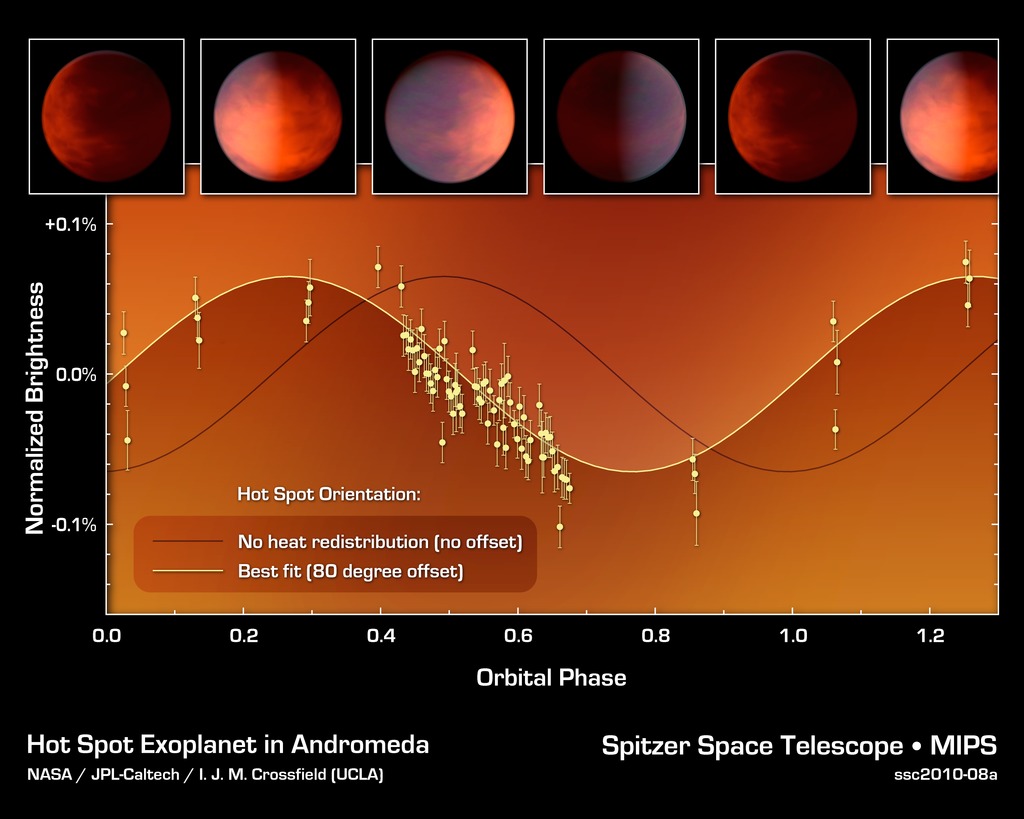
Credit: NASA/JPL-Caltech/UCLA
Chart • October 19th, 2010 • ssc2010-08a
ssc2010-08a
This graph of data from NASA's Spitzer Space Telescope shows how astronomers located a hot spot on a distant gas planet named upsilon Andromedae b -- and learned that it was in the wrong place.
This planet -- termed an exoplanet because it orbits a star beyond our sun -- whips around very closely to its star. It is tidally locked, meaning that one side always faces the star. One might think the hottest point of the planet would be smack dab in the middle of this sun-facing side, but previous research has shown that exoplanet hot spots can be offset, or over to the side, by up to 30 degrees.
This plot shows that the hot spot on upsilon Andromedae b is even farther over to the side -- a whopping 80 degrees. Astronomers figured this out by measuring the total infrared light of the planet and star, as the planet orbits around. (The planet is not transiting or crossing in front of its star, so it doesn't block the star's light.) When the hot spot faces Earth, the total brightness of the system will go up, as measured by Spitzer's heat-seeking, infrared eyes.
The black line shows what the system's light variations, or light curve, would look like if the hot spot were in the middle of the sun-facing side of the planet. The yellow line shows what was actually observed: the light curve is offset by 80 degrees, indicating that the hot spot is, oddly, almost all the way over the side. Astronomers are not sure how this can be.
About the Object
- Name
- Upsilon Andromedae b
- Type
- Planet > Type > Gas Giant
- Planet > Special Cases > Hot Jupiter
- Distance
- 44 Light Years
Color Mapping
| Band | Wavelength | Telescope |
| Infrared | 24.0 µm | Spitzer MIPS |
Astrometrics
- Position ()
- RA =1h 36m 47.8s
- Dec = 41° 24' 19.7"
- Field of View
- 0.0 x 0.0 arcminutes
- Orientation
- North is up
